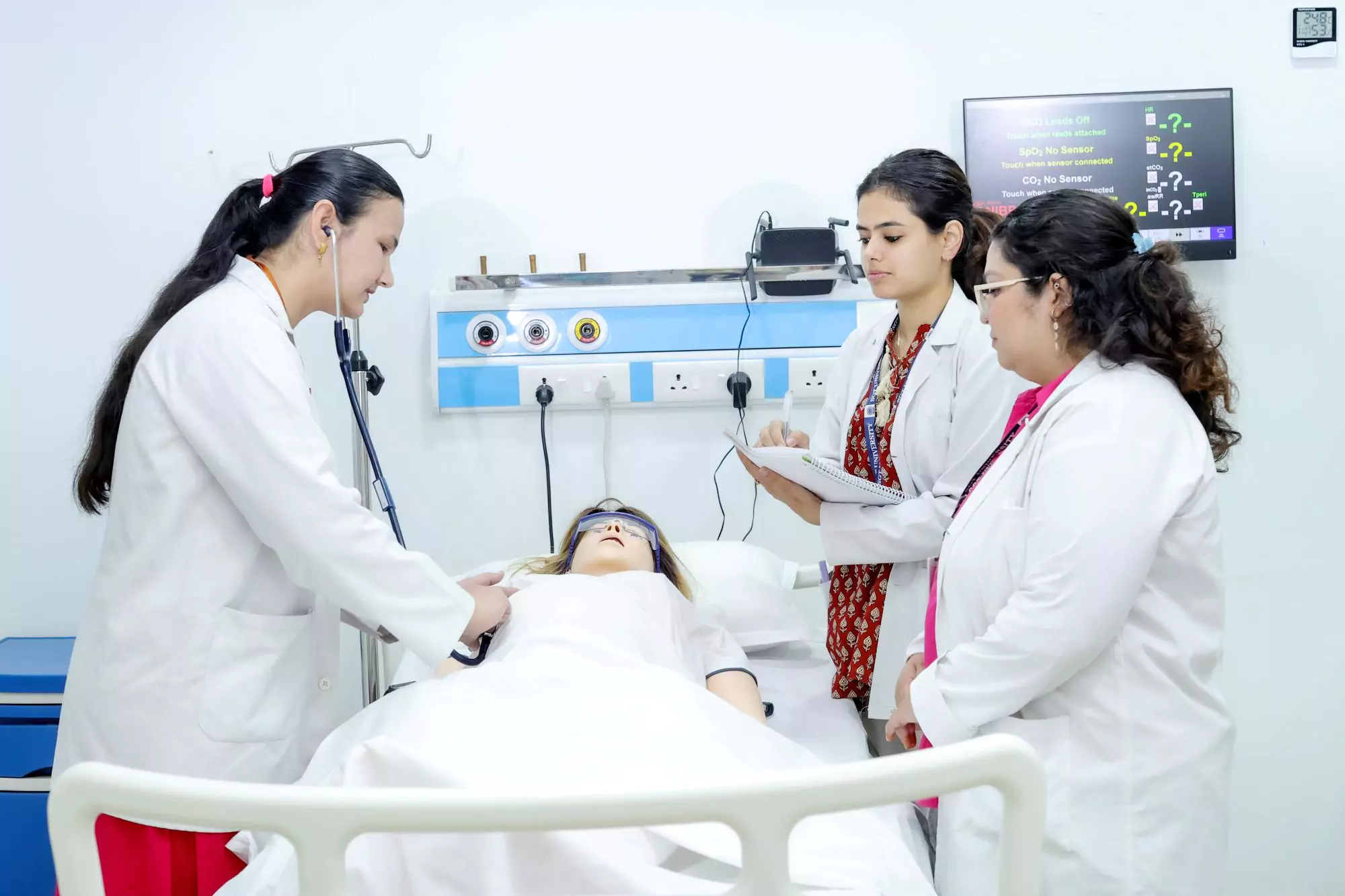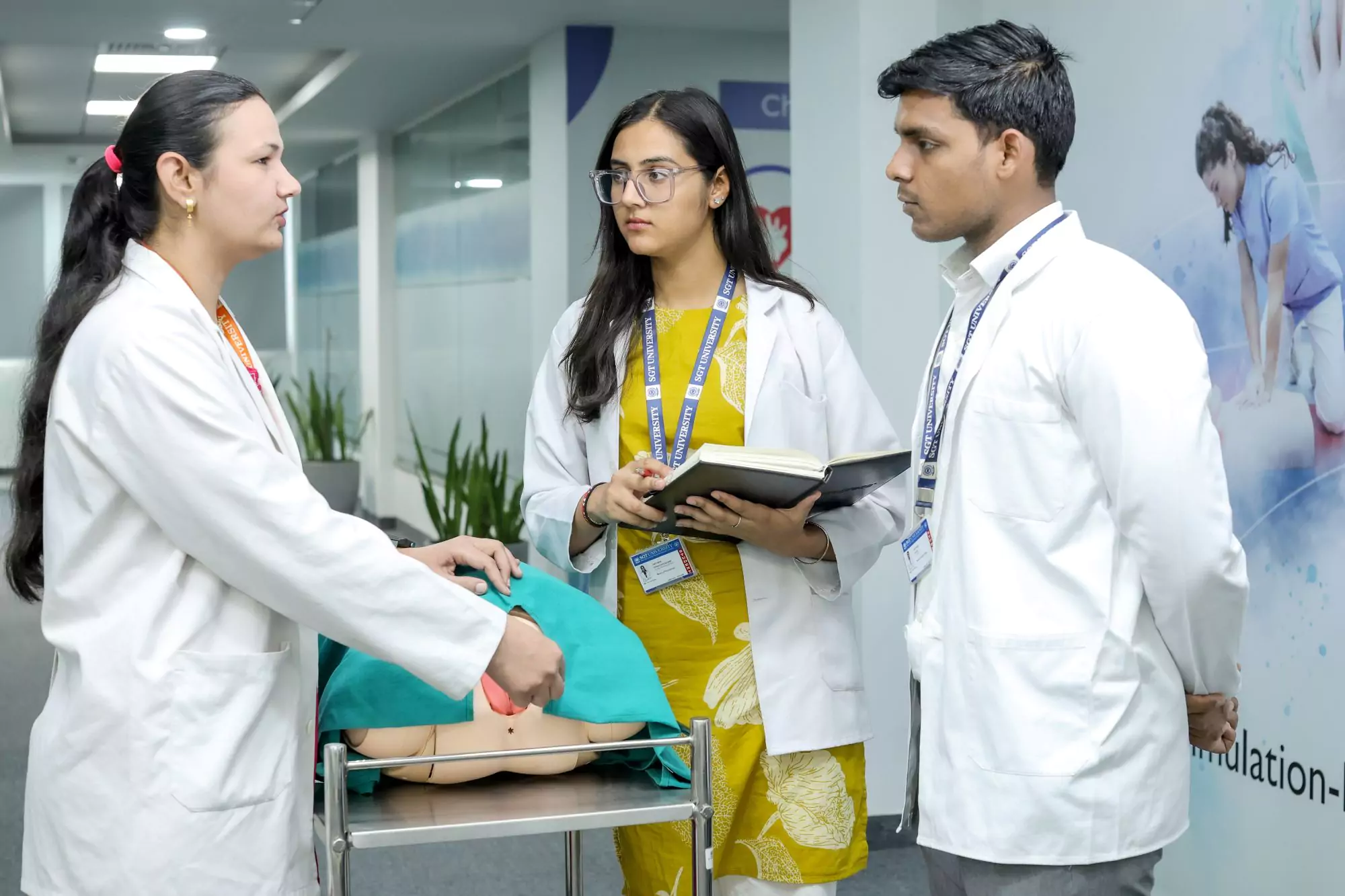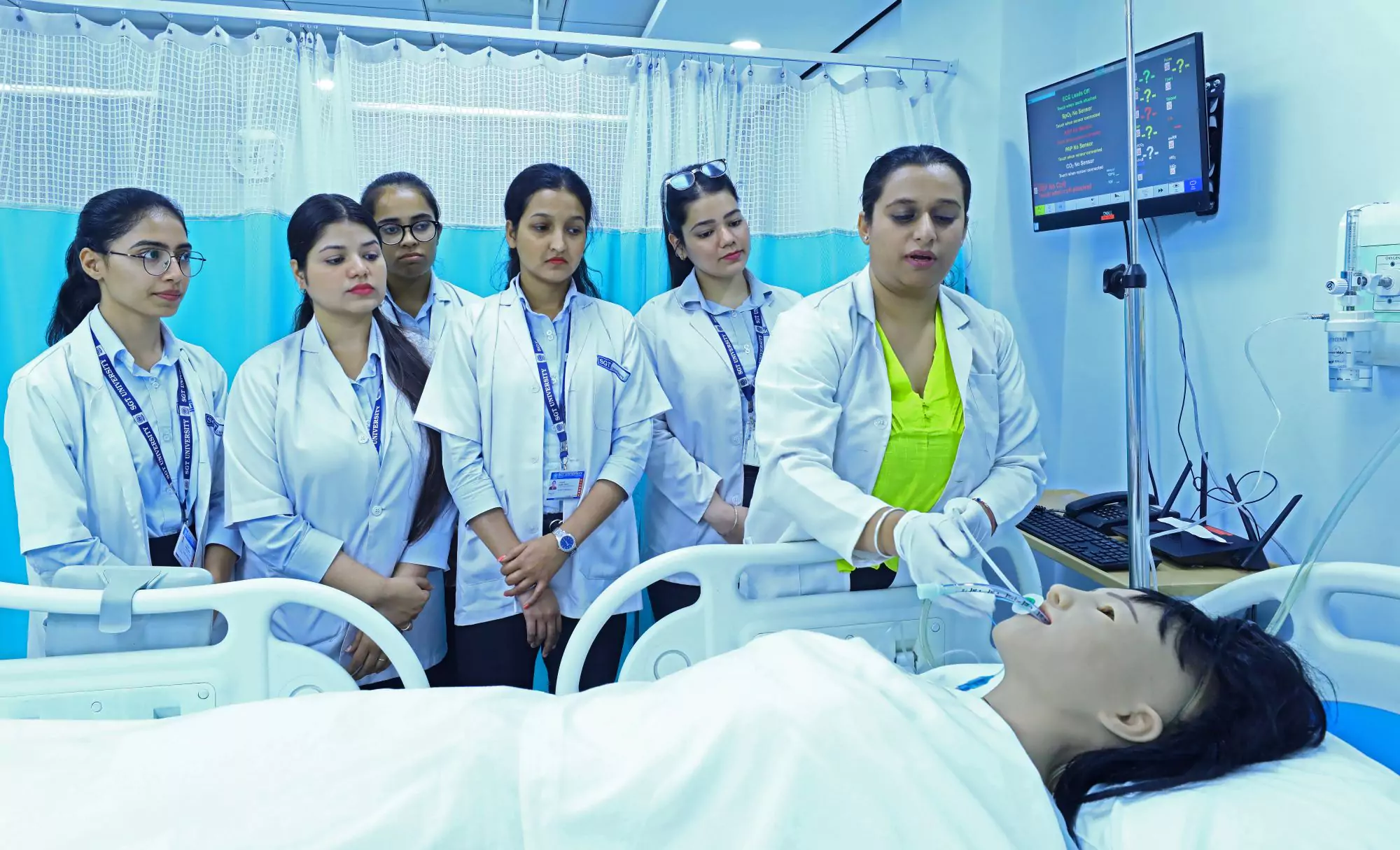
Department of
Obstetrics & Gynaecology Physiotherapy
The Department of Obstetrics & Gynaecology Physiotherapy at SGT
University is devoted to the advancement of women’s
health through holistic physiotherapeutic care, education, and research. The department
empowers students with in-depth
knowledge and clinical competence in managing physical and functional health challenges
specific to women.
A strong focus is placed on simulation-based learning, with birthing mannequins, pelvic
floor rehabilitation simulators, and
postpartum assessment models used to replicate real-life clinical encounters. Our students
are exposed to blended
pedagogies—including role-play, community immersion, reflective journals, and
interdisciplinary case conferences—that
encourage deep, reflective, and active learning beyond traditional lectures.
The curriculum equips students to manage a wide range of conditions, including prenatal
discomforts, labour-related
musculoskeletal issues, postnatal diastasis recti, pelvic organ prolapse, urinary
incontinence, and post-surgical
rehabilitation after gynaecological procedures.
Clinical training is provided in
collaboration with the Department of Obstetrics & Gynaecology at SGT Hospital, where
students gain hands-on exposure to antenatal and postnatal wards, labour rooms, and women’s
health OPDs. Outreach
initiatives further enhance student learning by engaging in rural maternal health programs
and women’s wellness camps.

- Department Objectives:
- To provide specialized education in physiotherapy for women’s health, focusing on prevention, treatment, and wellness across the lifespan.
- To develop practical skills through simulation tools, including pelvic floor biofeedback units, birthing models, and postpartum rehabilitation kits.
- To expose students to real-time clinical environments through structured clinical rotations in maternity hospitals and women’s health centres.
- To train students in the management of conditions such as pregnancy-related musculoskeletal issues, postnatal recovery, urinary incontinence, and pelvic floor dysfunction.
- To foster out-of-classroom learning through community visits, public health awareness drives, and adolescent health promotion programs.
- To incorporate learner-centred pedagogies such as role-play, OSCEs (Objective Structured Clinical Examinations), e-learning modules, and research projects in women’s health.


